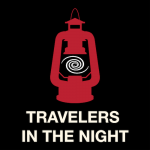Podcaster: Dr. Al Grauer

Title: Travelers in the Night Eps. 325 & 326: Marrakech & Asteroids 2016
Organization: Travelers in The Night
Link : Travelers in the Night ; @Nmcanopus
Description: Today’s two stories:
- The Moroccan Oukaimeden Sky Survey or MOSS has discovered nearly 3,000 asteroids and several comets since 2011. 2016 HX3 approaches Mars more closely than it does Earth.
- 2016 was another record year for asteroid hunters during which we discovered 1,894 new Earth approaching objects. My team, the NASA funded, Catalina Sky Survey, led the pack with 931 Near Earth Asteroid discoveries.
Bio: Dr. Al Grauer is currently an observing member of the Catalina Sky Survey Team at the University of Arizona. This group has discovered nearly half of the Earth approaching objects known to exist. He received a PhD in Physics in 1971 and has been an observational Astronomer for 43 years. He retired as a University Professor after 39 years of interacting with students. He has conducted research projects using telescopes in Arizona, Chile, Australia, Hawaii, Louisiana, and Georgia with funding from NSF and NASA.
He is noted as Co-discoverer of comet P/2010 TO20 Linear-Grauer, Discoverer of comet C/2009 U5 Grauer and has asteroid 18871 Grauer named for him.
Today’s sponsor: Big thanks to our Patreon supporters this month: Paul M. Sutter, Chris Nealen, Frank Frankovic, Frank Tippin, Jako Danar, Michael Freedman, Nik Whitehead, Rani Bush, Ron Diehl, Steven Emert, Brett Duane, Don Swartwout, Vladimir Bogdanov, Steven Kluth, Steve Nerlich, Phyllis Foster, Michael W, James K Wood, Katrina Ince, Cherry Wood, Brett Duane, Dmytro O
Please consider sponsoring a day or two. Just click on the “Donate” button on the lower left side of this webpage, or contact us at signup@365daysofastronomy.org.
Or please visit our Patreon page: https://www.patreon.com/365DaysOfAstronomy
Transcript:
Ep. 325: Marrakech
A location 9,000 feet above sea level in the Atlas Mountains of Morocco is ideal for an asteroid hunter since the weather is often clear and the skies are dark. It was thus intriguing for me to see that a new asteroid discovery was posted from J43 which is the Morocco Oukaïmeden [pronounced Oukaï-meden] Sky Survey or (MOSS) located near Marrakech , a name I had not encountered except in the Crosby, Stills, and Nash song “Marrakech Express”. The MOSS observatory has team members in Morocco, France, and Switzerland, call themselves amateurs, and produces professional quality results. The observatory is the result of a partnership between the Cadi Ayyad University in Marrakech which provided the building, the Jura Astronomy Observatory in Switzerland which provided the dome, and French amateur astronomer Claudine Rinner who provided the telescope. Claudine Rinner in France and Michel Ory in Switzerland have operated the telescope more than one thousand nights since 2011, remotely, with great patience, via a very slow internet connection. In the era of large funded surveys, sweeping through the sky, discovering numbers of asteroids, the MOSS group has been able to discover nearly three thousand of main belt asteroids as well as a number of Earth Approaching Asteroids and several comets.
A recent MOSS team’s discovery is 2016 HX3 a two football field diameter Earth approaching asteroid which makes much closer approaches to Mars than it does to Earth. Perhaps it will become interesting as a source of raw materials for future Martian colonists.
Ep. 326: Asteroid 2016
2016 was another record year for asteroid hunters during which we discovered 1,894 new Earth-approaching objects. My team, the NASA-funded Catalina Sky Survey, led the pack with 931 near-Earth asteroid discoveries. Overall, in 2016, asteroid hunters found seven asteroids larger than one kilometer in diameter which, if impacting the Earth, could cause global climate change.
We also found 120 potentially hazardous asteroids which can come close enough and are large enough to warrant special attention. Fortunately, none of them will strike the Earth in the foreseeable future. About 90% of the 2016 Earth-approaching asteroid discoveries were funded by the NASA Near-Earth Objects Observations Program, which is mandated by the U.S. Congress to discover potentially dangerous celestial neighbors. It is likely that in 2017, asteroid hunters will discover a small object on collision course with our home planet. My money is on the Catalina Sky Survey’s Schmidt Telescope on Mount Bigelow. My team has recently made major improvements to this telescope, which includes a 100 million pixel camera giving it a field of view about half the size of the bowl of the Big Dipper.
Statistics suggest that an impacting asteroid, which we find will be less than 13 feet in diameter, explode in the atmosphere at about three times the height airliners fly, produce a spectacular light show if it occurs at night, and perhaps rain a few pieces onto the ground for meteorite hunters to discover. Maybe we will be able to tell you where to look for them. For Travelers in the Night, this is Dr. Al Grauer. Go to travelersinthenight.org program 326 for more information.
End of podcast:
365 Days of Astronomy
=====================
The 365 Days of Astronomy Podcast is produced by Planetary Science Institute. Audio post production by me, Richard Drumm, project management by Avivah Yamani, and hosting donated by libsyn.com. This content is released under a creative commons Attribution-NonCommercial 4.0 International license. Please share what you love but don’t sell what’s free.
This show is made possible thanks to the generous donations of people like you! Please consider supporting our show on Patreon.com/CosmoQuestX and get access to bonus content. Without your passion and contribution, we won’t be able to share the stories and inspire the worlds. We invite you to join our community of storytellers and share your voice with listeners worldwide.
As we wrap up today’s episode, we are looking forward to unravel more stories from the Universe. With every new discovery from ground-based and space-based observatories, and each milestone in space exploration, we come closer to understanding the cosmos and our place within it.
Until next time let the stars guide your curiosity!
